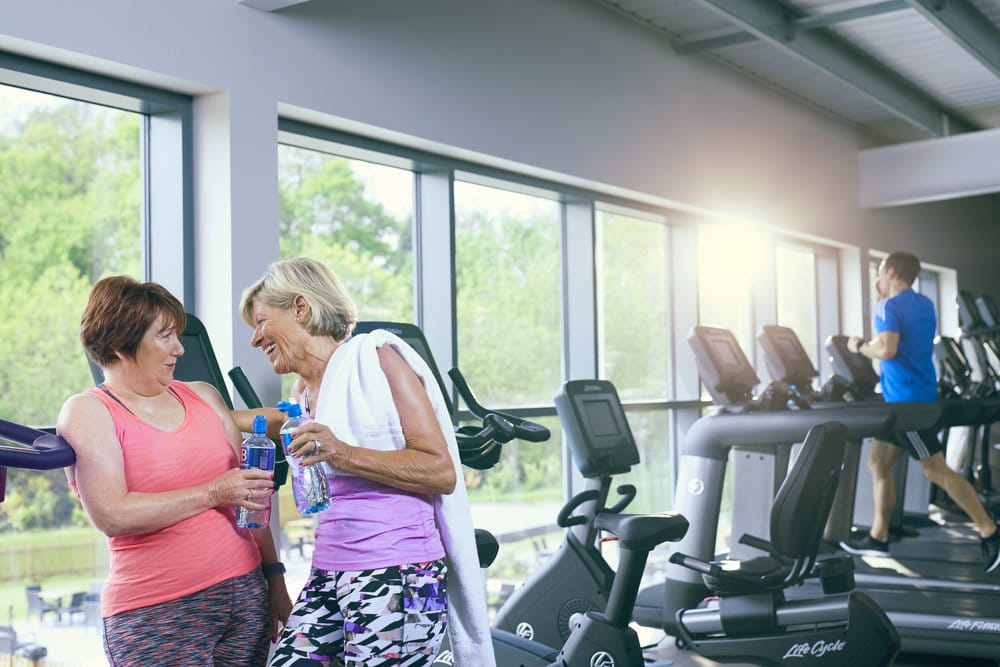When it comes to fitness and training, it’s easy to assume that the older you get, the more strength and agility you lose. But age alone is not an insurmountable barrier to physical activity.
Figures published by Sport England show that over-55s have seen their strength decline during the pandemic and lockdown periods, with 7 in 10 UK pain sufferers delaying seeking medical advice.
But it’s never too late to start improving physical fitness and building your strength back up.
Here we look at some of the oldest Olympians still competing in 2021, and some of the everyday over 50s that are breaking barriers and proving that age is not an obstacle.
Success is ageless
There have already been a number of Tokyo 2020 headlines about the multiple record-breaking teens, but there are some impressive stories from the other end of the age spectrum.
Forty-six-year-old gymnast Oksana Chusovitina received a standing ovation after performing in what is her eighth Olympic Games, in a sport primarily dominated by teenage athletes, showing that it is completely possible to retain agility and stamina to extremely high levels well into middle age if you put your mind to it.
Then there’s Mary Hanna, the Australian equestrian who is the oldest athlete competing at Tokyo 2020, and the second oldest woman to compete in the history of the Olympic Games at an impressive 66 years old.
Chusovitina and Hanna are changing the conversation around age and athleticism for women especially – proof that someone can maintain fitness and compete way past what is generally considered their prime.
At age 62, another Australian equestrian, Andrew Hoy, became the country’s oldest medallist after winning both a silver and bronze medal in the Eventing competition. Hoy was also competing in his eighth Games and has no intention of stopping anytime soon.
Proving that training doesn’t have to take over your life is Luxembourg’s table tennis star, Xia Lian Ni.
The 58-year-old mum claims she only practises two or three times a week and warms up for 10 minutes before a game!
You don’t have to make it to the Olympics…
While most people consider their 50s to be the time to start winding down, Edwina Brocklesby only started exercising at 50 and went on to run her first half marathon after her husband poked fun at the idea.
Sadly, Edwina lost her husband when she was only 52, and she found that running was the most comforting option to deal with her grief.
At 53, Edwina ran her first marathon, but after some careful consideration decided to alleviate stress on her joints and take up cycling and swimming.
Impressively, she completed her first triathlon at 58 and has continued to maintain her fitness levels, becoming the oldest British woman to complete an Ironman triathlon at 74. Now 77, Edwina is the director of Silverfit, a charity that promotes physical activity among older generations.
The UK’s oldest personal trainer comes in the form of Eddy Diget, who is now 76 years old. Eddy has been weight training for over 45 years and was British bodybuilding champion twice – at the ages of 58 and 68 respectively!
Eddy claimed that “so much of fitness is in the mind; people get older and are told they can’t do things, so they decide they can’t” in a recent interview with the Guardian.
Eddy is a rehab consultant and trains cancer sufferers, wheelchair users, and people with chronic regional pain syndrome, but he also trains an Olympic fencer! The personal trainer jumped at the chance to get back to work after COVID restrictions lifted and continues to show that age is nothing but a number.
The generation game
People have become much more educated about being fit in recent years, especially the over-50s and over-60s.
Mature people are much more aware of the benefits that can come out of training. A 2016 study showed that gym usage in older generations was on the up, with over 65s the most frequent users and the most likely to maintain a gym routine.
While the UK gym users were restricted to home workouts through 2020, the USA saw the number of gym members aged 55 or older increase to 22.3%.
There’s so much evidence that if you keep physically active, you don’t experience some of the difficulties associated with ageing.
Of course, recovery time increases as you age, but this doesn’t restrict capabilities; it just means that the body needs to spend more time repairing itself and rejuvenating.
However, if you keep bone and muscle strength up, you’re less likely to fall or injure yourself at all!
Stumbles and falls contribute to one of the highest rates of hospitalisation among the older generations, so keeping agile minimises the risk of injury.
Some older athletes use laser therapy devices for quicker recovery times and to support those niggling aches and pains that can restrict and demotivate us – so, what’s stopping you?
